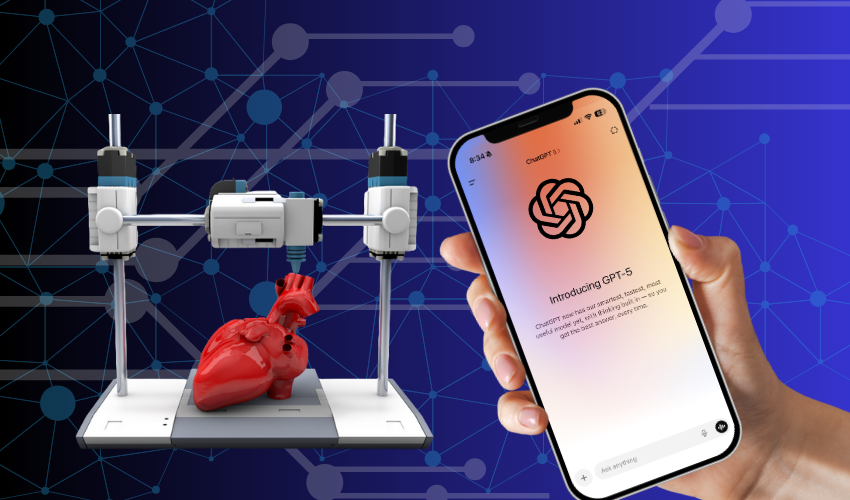The Release of GPT-5 Could Accelerate AI’s Role in 3D Printing

OpenAI recently announced the launch of GPT-5, the newest version of its language model that CEO Sam Altman described as “having an expert with a doctorate in your pocket.” This new update brings significant improvements to the current models’ reasoning, customization, and reliability. It is currently available to all ChatGPT users, including those on a free plan.
While many of the discussions pertaining to GPT-5 revolve around its impact and application within the healthcare and software industries, its new capabilities could also have implications for additive manufacturing. GPT-5’s advanced reasoning and self-described “agentic” abilities in coding and data analysis could make artificial intelligence an even more powerful tool in optimizing 3D printing processes.

It was announced that the new GPT-5 model will have stronger coding, reasoning, and creative writing skills. (Photo Credit: OpenAI)
Already, AI has played a growing role within additive manufacturing from generative design and simulations to real-time monitoring and defect detection. Integrating the new GPT-5 model could enhance these functions further, allowing it to handle more complex tasks with minimal prompting. This would allow engineers to streamline design workflows and analyze large volumes of data. Additionally, the new model could help create custom software tools for print process optimization.
Design optimization is one specific area where GPT-5 could provide immediate value within the industry. Generative design algorithms are already being utilized to create lightweight and strong parts for the aerospace and automotive industries. With GPT-5’s ability to quickly produce and refine code, design tools that rely on AI could be developed or adapted faster, allowing engineers to experiment with new geometries and manufacturing strategies with half the time.
Quality assurance could also potentially benefit from the new update. Within additive manufacturing, defects often occur at the microstructural level and can often be difficult to detect during the production process. GPT-5 could work alongside a computer vision system to interpret inspection data in real time. This way, the program could quickly identify irregularities and provide recommendations for corrective actions before a print is even completed. This approach can reduce waste, lower costs, and improve the reliability of the parts produced.

The role of AI continues to shape decision-making within additive manufacturing. (Photo Credit: Reuters)
With this specific update, the model’s improved reliability and ability to understand context could help address one of the glaring problems that prevents its application in AM: trust. With the model now providing clear explanations of its reasoning and offering safe alternatives when a task is outside of its capabilities, GPT-5 could potentially make AI-assisted decision-making both more transparent and accessible.
As with most advancements currently happening within the realm of artificial intelligence, there will be many questions about how quickly the technology can be adopted into industrial environments. Successful implementation will require not only technical integration but also collaboration between AI developers, equipment manufacturers, and key industry stakeholders.
If GPT-5 can be effectively integrated into additive manufacturing, it could accelerate the trend toward designing materials and parts specifically for 3D printing rather than adapting older and traditional manufacturing methods. That shift has the potential to make production more efficient, more sustainable, and better suited to the growing needs of modern industry.
What do you think about GPT-5’s potential role in the future of 3D printing? Let us know in a comment below or on our LinkedIn and Facebook pages! Don’t forget to sign up for our free weekly Newsletter here, the latest 3D printing news straight to your inbox. You can also find all our videos on our YouTube channel.
*Cover Photo Credit: OpenAI, Reuters, & Canva







